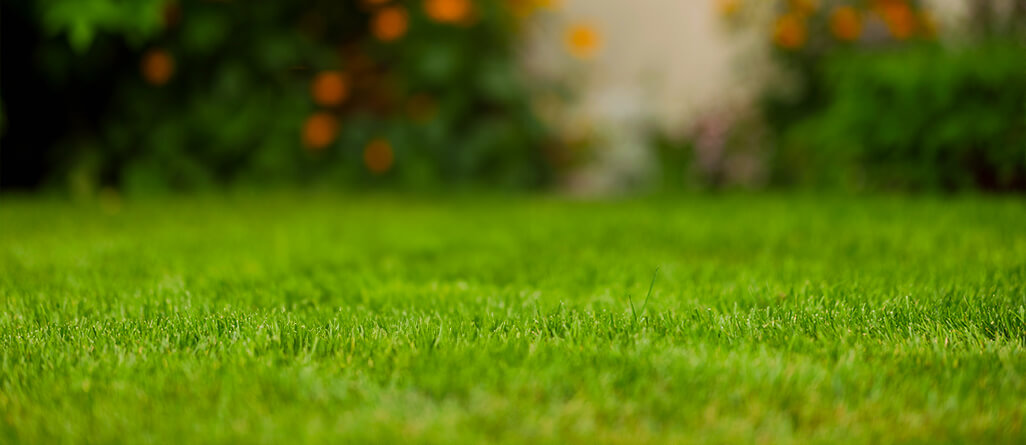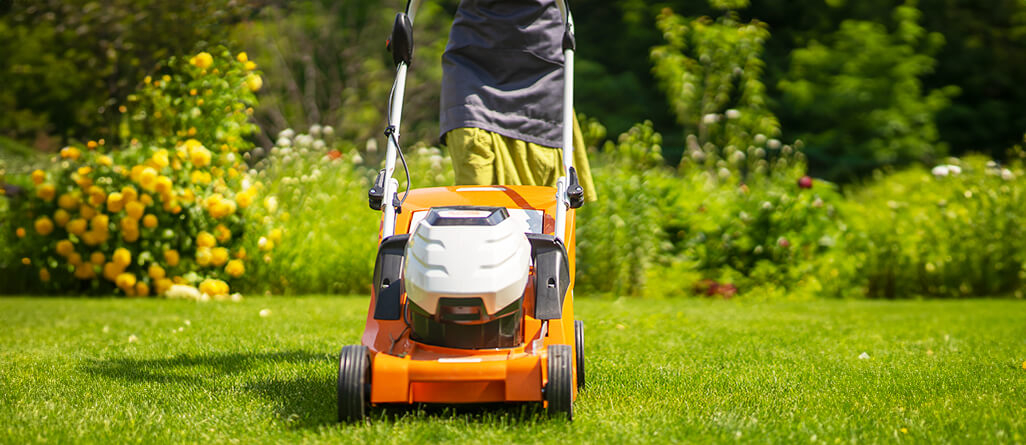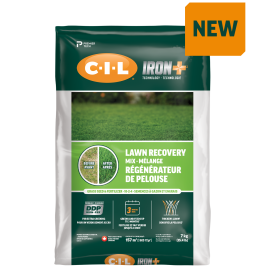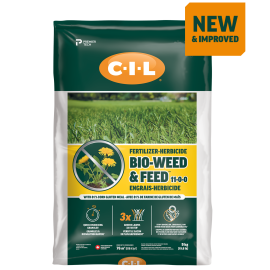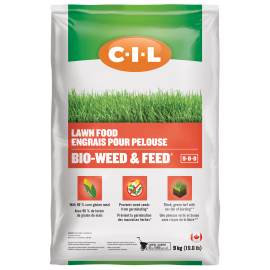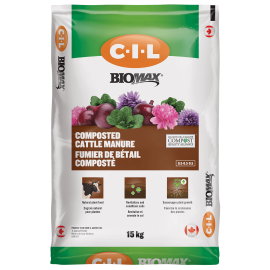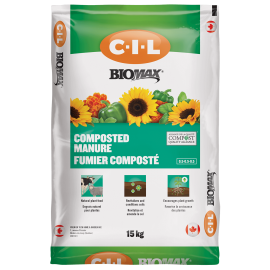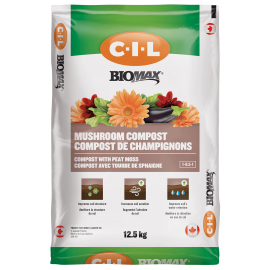Lawn care made easy
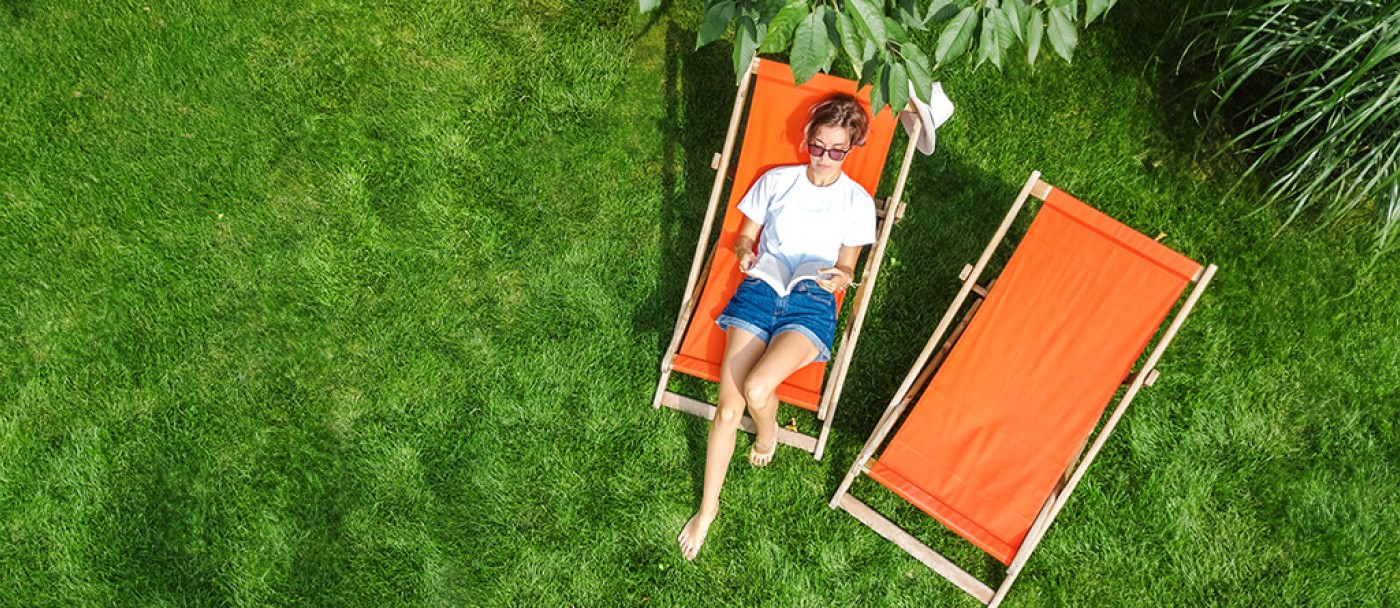
You want your lawn to look respectable and up to the standards on your street. But you don’t want it to consume much more time than you have available.
There are only a few things to consider: initial spring clean-up, fertilizing twice a year, weed control and weekly mowing. Oh yeah, and keep an eye out for lawn insects.
Spring clean-up
- When the ground is firm enough, gently rake up accumulated winter debris with a leaf rake. Besides removing any obvious branches, leaves, gravel and doggy do, this will remove any matted material that might choke your grass, plus it will open up and stimulate the lawn.
- Repair any dead or damaged lawn patches with seed and lawn soil. Remember that grass seed needs temperatures to be around 15 °C to germinate, so don’t do this too soon.
Fertilizing
- Don’t rush this. In the early spring, the grass plant wants to invest its energy into much needed root development. Fertilizing too soon with a quick-release, high-nitrogen (first number on a bag of fertilizer, e.g. 30-0-3) product will divert the lawn’s energy from root to leaf development. And that creates a weaker lawn going into the summer. Wait until the first mowing. C-I-L Restore Feed & Seed 22-0-10 contains slow-release nitrogen plus overseeding grass seed to invigorate the lawn and help fill in thin areas. Apply again in early fall.
- The thing about fertilizing/overseeding twice a year is that it can help create a stronger mass of knitted lawn that keeps weed seeds from finding bare spots to germinate in.
Weed control
- Usually in late spring, you will start seeing broadleaf weeds cropping up and flowering. Trying to keep weeds down doesn’t have to be complicated. You can dig them out manually with a weed puller tool. Or you can apply a plant-based spot spray like Wilson WEED OUT that kills the weeds to the roots, without damaging the grass.
- Come fall, you’ll see new weeds flowering again, so you should go around and control them as they come up. Get them in the fall and you won’t see them the following spring.
Weekly mowing
- A lot of people find grass cutting somewhat relaxing. Mowing makes the ragged-looking lawn look neat and there is a bonus: you are strengthening it. Grass plants are different from most other landscape plants in that they prefer being cut. Compared to shrubs and perennials/annuals, which would eventually die if continually cut short, lawns put out new shoots from the base of the plant and flourish.
- Don’t cut too short. The height of your mower blade should be 7.5 to 10 cm (3-4 inches). At this height, you will encourage a healthier lawn. The taller grass blades will shade the crowns of the grass plants, thus reducing watering, and they can also create a barrier for incoming weed seeds.
- Lawns grow vigorously in the spring, up to summertime. During this hot, dry weather, if you aren’t into watering your lawn, you’ll notice a slowing of growth and maybe even some browning. Have no fear, as it is in the lawn’s nature to go dormant during heat stress periods. It will come back once the cooler, wetter weather returns.
Insects
- The only other thing you need to watch for is the presence of grass-eating insects, such as grubs or chinch bugs. If your adjoining neighbours are seeing damage, you need to pay a little more attention to your own lawn. Grubs chew the lawn roots and chinch bugs chew the crown.
- There are safe environmental solutions to control them: Wilson GRUB OUT or BUG-X OUT Nematodes. You simply re-activate the live nematodes using a hose-end applicator and water them over the infested area. These activated nematodes, once watered in, will source and kill the damaging pests
Lawn care does not have to be complicated. With just a little of your time, you can have a decent patch of grass that enhances the curb appeal of your property.
Remember, it’s not just about having thick-looking grass: a lawn sequesters carbon, filters toxins out of rainwater, eats CO2 and returns fresh oxygen to the air. It provides a soft surface to play on and in the summer, it is significantly cooler than asphalt. It’s more than just a green patch!
